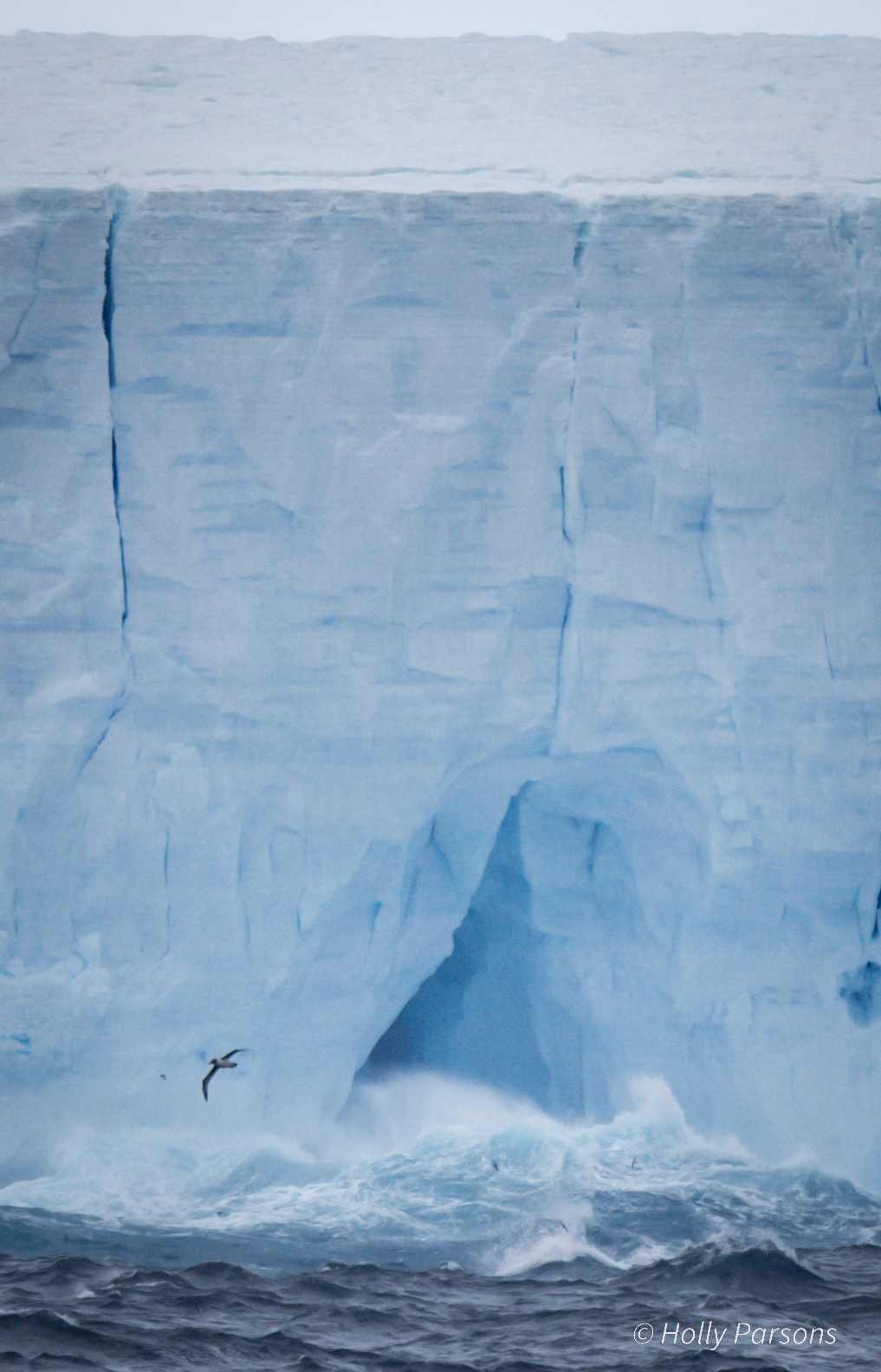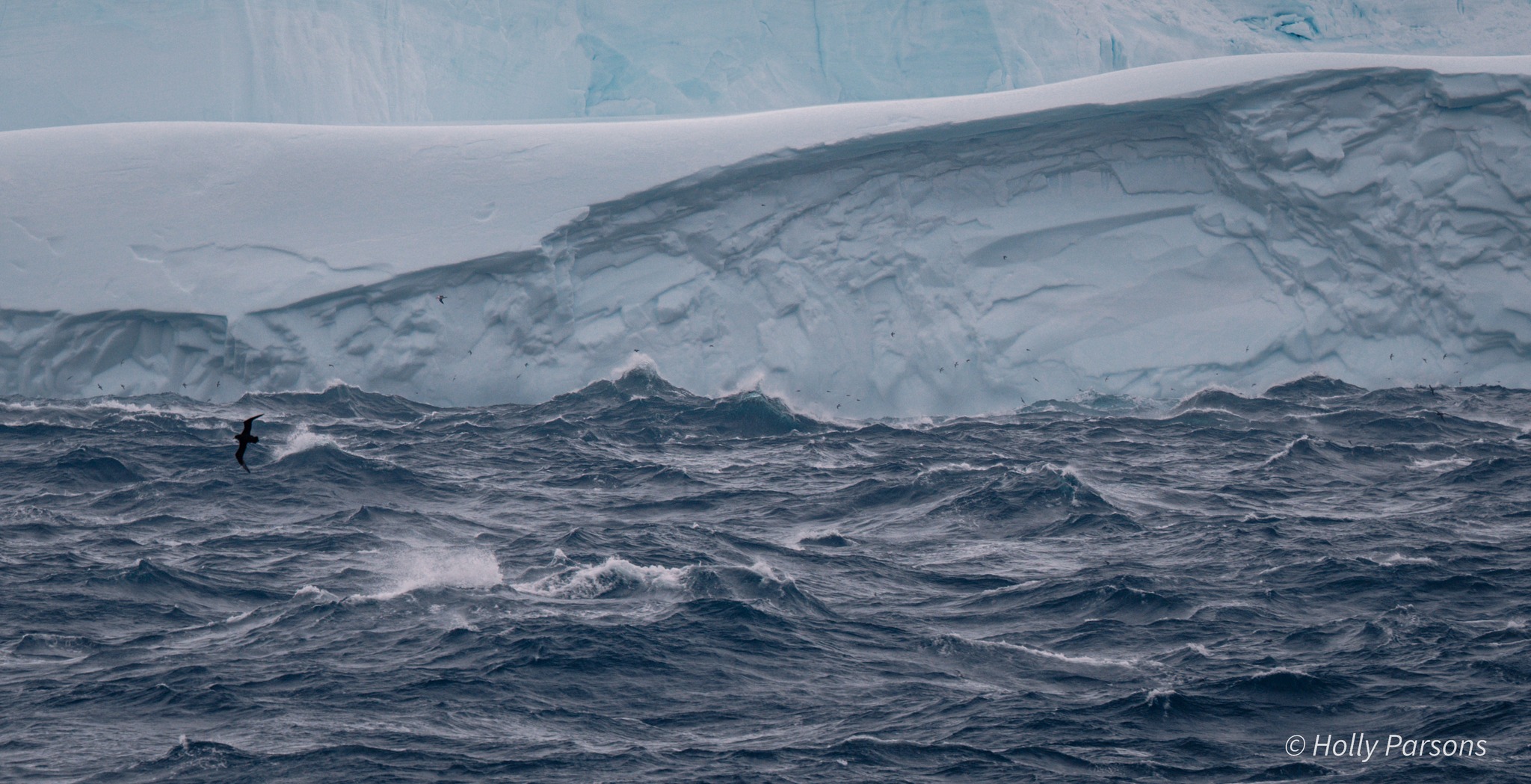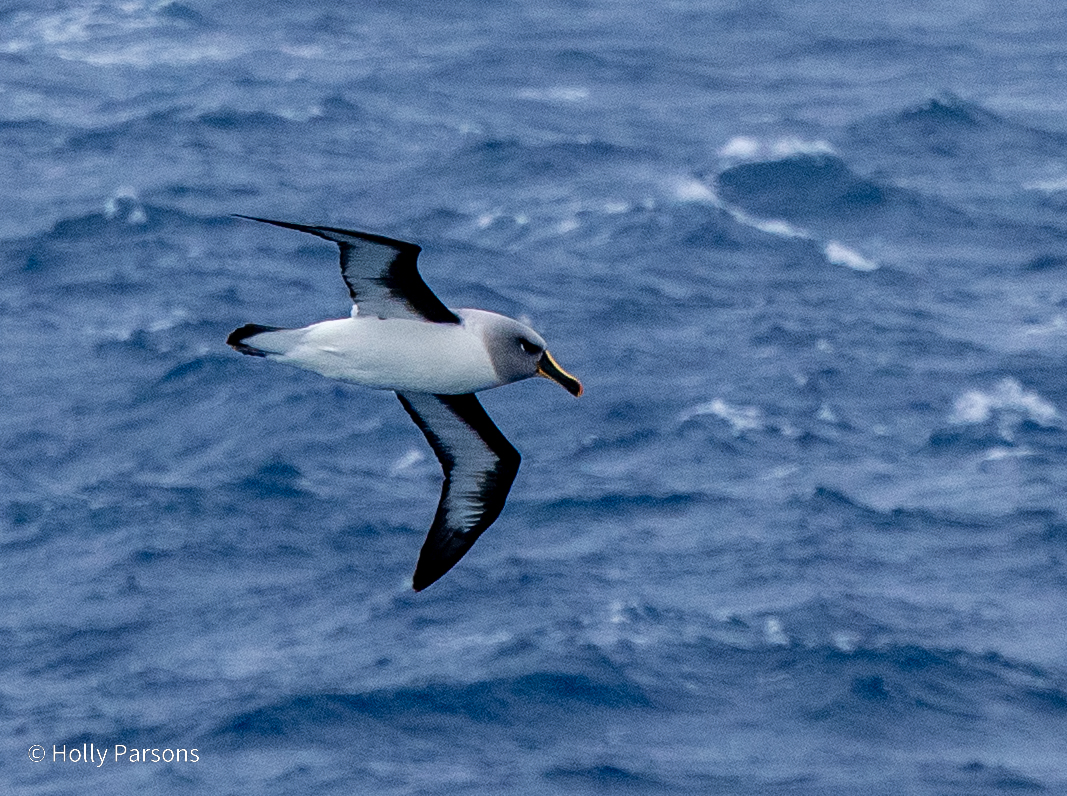
A Light-mantled Albatross shows the impressive above-water height of A23a, photograph by Holly Parsons
A23a, the world’s largest iceberg, ran aground approximately 80 km to the west of South Georgia/Islas Georgias del Sur* in the South Atlantic on 01 March 2025. The c. 3200 square kilometre tabular berg calved from the Filchner–Ronne Ice Shelf in the Weddell Sea in 1986. Not surprisingly its presence so close to the island quickly attracted the interest of Antarctic cruise ships and their passengers, as described in the following two accounts.
https://youtube.com/shorts/J4LT_erpqMA?feature=share
Video of A23a on 15 March 2025 by Cathi Crabtree
Photographer Eric Guth aboard the cruise ship National Geographic Endurance writes on Instagram of noticing thousands of seabirds from albatrosses to prions alongside the estimated 187-m deep grounded iceberg, after spending close to two hours in its vicinity on 07 March 2025 “while waves, wind and heavy seas pounded its windward side. With so much extent below the water’s surface this submerged wall of ice has become a pump for nutrients. As the prevailing westerlies and associated currents ramp up the underside of the berg they bring nutrients to the surface while at the same time speeding up the melt process which releases limiting minerals like iron into the ocean. This further fuels the organisms the associated wildlife are feeding on.”

A White-chinned Petrel flies along the edge of the grounded iceberg, photograph by Holly Parsons
A week later on 15 March, Holly Parsons of Albatross Lovers sailed alongside the iceberg as a passenger on the cruise ship Le Boréal, taking photographs and noting the presence of Grey-headed Albatrosses Thalassarche chrysostoma , Light-mantled Albatrosses Phoebetria palpebrata and White-chinned Petrels, Procellaria equinoctialis, among prions Pachyptila sp. and other seabirds.

A Grey-headed Albatross close to iceberg A23a, photograph by Holly Parsons
With thanks to Holly Parsons.
John Cooper, Emeritus Information Officer, Agreement on the Conservation of Albatrosses and Petrels, 22 April 2025
*A dispute exists between the Governments of Argentina and the United Kingdom of Great Britain and Northern Ireland concerning sovereignty over the Falkland Islands (Islas Malvinas), South Georgia and the South Sandwich Islands (Islas Georgias del Sur y Islas Sandwich del Sur) and the surrounding maritime areas.

 English
English  Français
Français  Español
Español